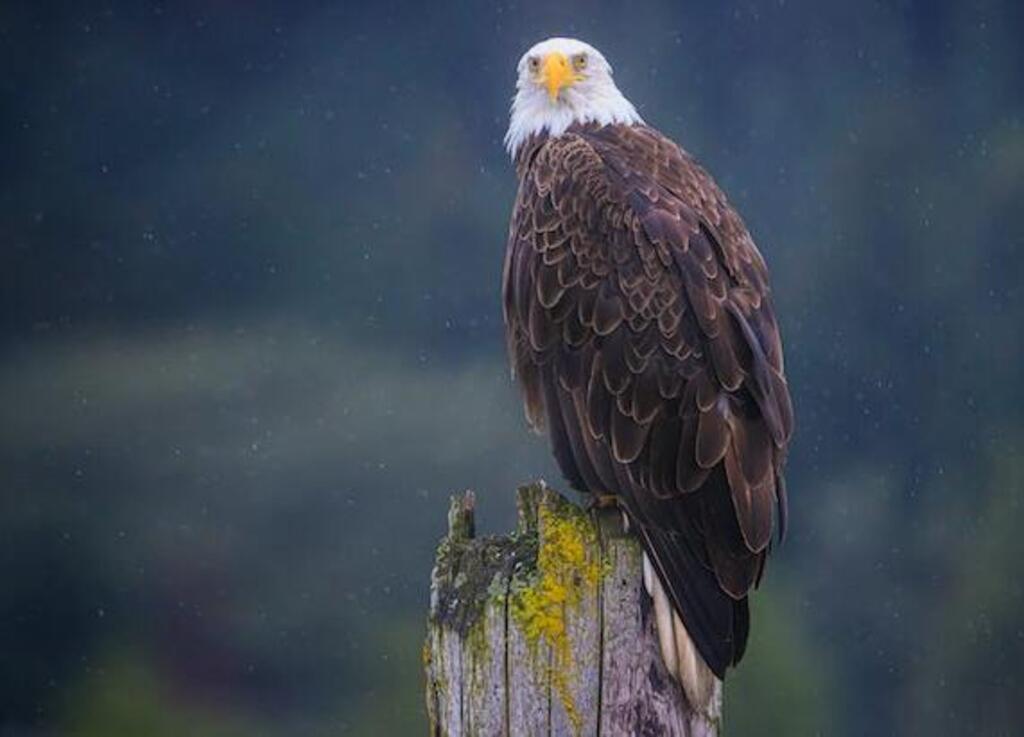Do eagles eat doves? It’s a feathery showdown that has left bird enthusiasts scratching their heads. In this wild avian tale, we’ll uncover the truth about this aerial gastronomic clash.
So, do eagles satisfy their hunger with these peaceful symbols of love, or is there more to the story? Let’s dive in and untangle the beak-biting mystery!
Table of Contents
- 1 Key Takeaways
- 2 Types of Prey Eagles Hunt
- 3 Eagle Feeding Behaviors
- 4 Do Eagles Eat Doves
- 5 Eagle-Dove Interactions
- 6 Eagle Diet Variations
- 7 Dove Vulnerability to Eagles
- 8 Eagle and Dove Coexistence
- 9 Misconceptions and Myths
- 10 Other Factors Affecting Eagle Diet
- 11 Conservation and Protection Efforts
- 12 Frequently Asked Questions
- 13 Conclusion
- 14 Author
Key Takeaways
- Eagles have a fascinating relationship with doves, involving hunting techniques and escape strategies.
- The dynamics between eagles and doves are important for understanding avian ecosystems and maintaining ecological balance.
- Prey availability plays a significant role in the vulnerability of doves to eagles, as eagles exploit their vulnerability through hunting techniques.
- Human interventions and conservation efforts are necessary to protect both eagle and dove populations, including promoting coexistence and creating protected areas.
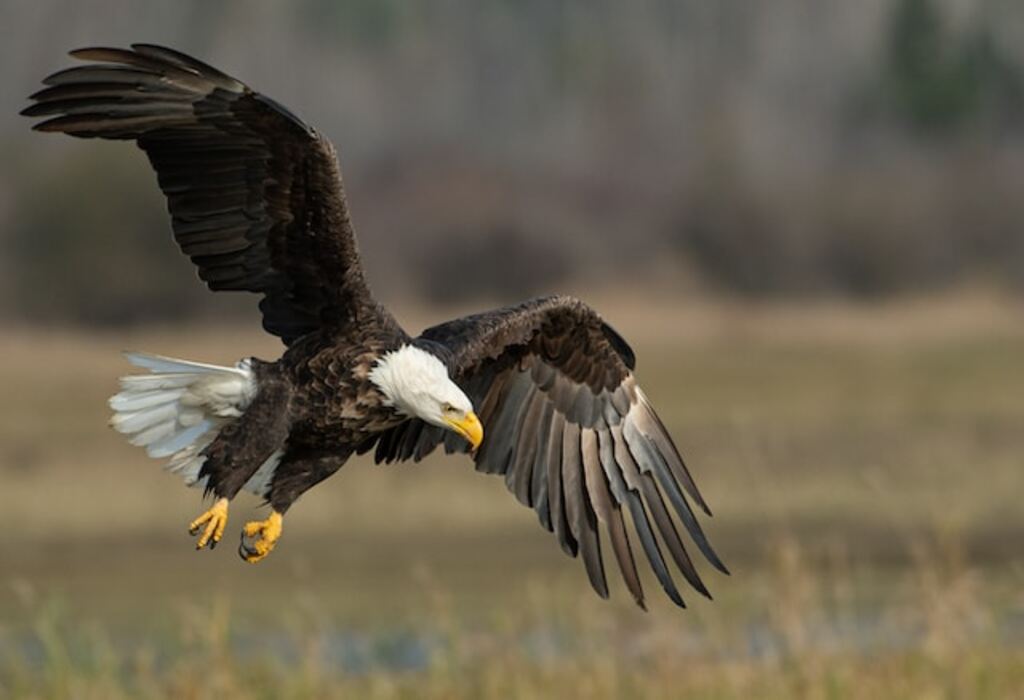
Types of Prey Eagles Hunt
One of the intriguing aspects of eagles’ hunting habits is their choice of prey. Eagles employ a variety of hunting techniques to capture their prey.
They have exceptional vision, allowing them to spot potential targets from great distances. Furthermore, eagles exhibit a keen sense of timing and accuracy when swooping down on their prey.
Their prey selection is diverse, ranging from fish to small mammals and birds. This leads us to the subsequent section about eagle feeding behaviors.
Eagle Feeding Behaviors
In the realm of avian feeding behaviors, an emphasis can be placed on the dietary preferences of eagles, particularly in relation to certain avian species.
Eagles employ various hunting techniques to catch their prey, including aerial attacks and ambushes.
Once a meal is secured, eagles exhibit distinct feeding habits, such as tearing apart the prey using their sharp beaks and talons. These behaviors shed light on the complex dynamics of eagle-dove interactions.
Do Eagles Eat Doves
Yes, eagles are known to eat doves. Eagles are powerful birds of prey and have a diverse diet that includes smaller birds like doves. They use their sharp beaks and talons to catch and consume their prey, including doves, as a source of food.
Eagle-Dove Interactions
Contrary to popular belief, it is rather intriguing how the interactions between eagles and doves unveil a captivating dance of predator and prey.
1) Eagles employ a range of hunting techniques, including aerial attacks, surprise ambushes, and strategic dives.
2) Doves, on the other hand, have evolved various escape strategies such as rapid flight, camouflage, and flocking behavior.
3) This ongoing battle of wits and survival showcases the remarkable adaptations of both species.
4) Understanding these dynamics is crucial to comprehending the complex dynamics of avian ecosystems.
Transitioning to the subsequent section about ‘eagle diet variations’, it is evident that prey availability plays a significant role.
Eagle Diet Variations
Predominantly carnivorous, the dietary preferences of eagles are known to encompass a diverse range of prey species. Eagle diet variations reflect their adaptability and hunting techniques.
| Prey Type | Examples |
|---|---|
| Fish | Salmon, trout, catfish |
| Rodents | Mice, rats, squirrels |
| Birds | Doves, pigeons, ducks |
| Reptiles | Snakes, lizards, turtles |
Factors influencing dove vulnerability to eagle predation include dove size, behavior, habitat, and the presence of protective cover.
Larger doves may be more resistant to predation, while those that exhibit evasive flight patterns or seek shelter in dense vegetation can reduce their risk.
Additionally, the availability of alternative food sources and the overall eagle population density in a specific area can impact dove vulnerability.
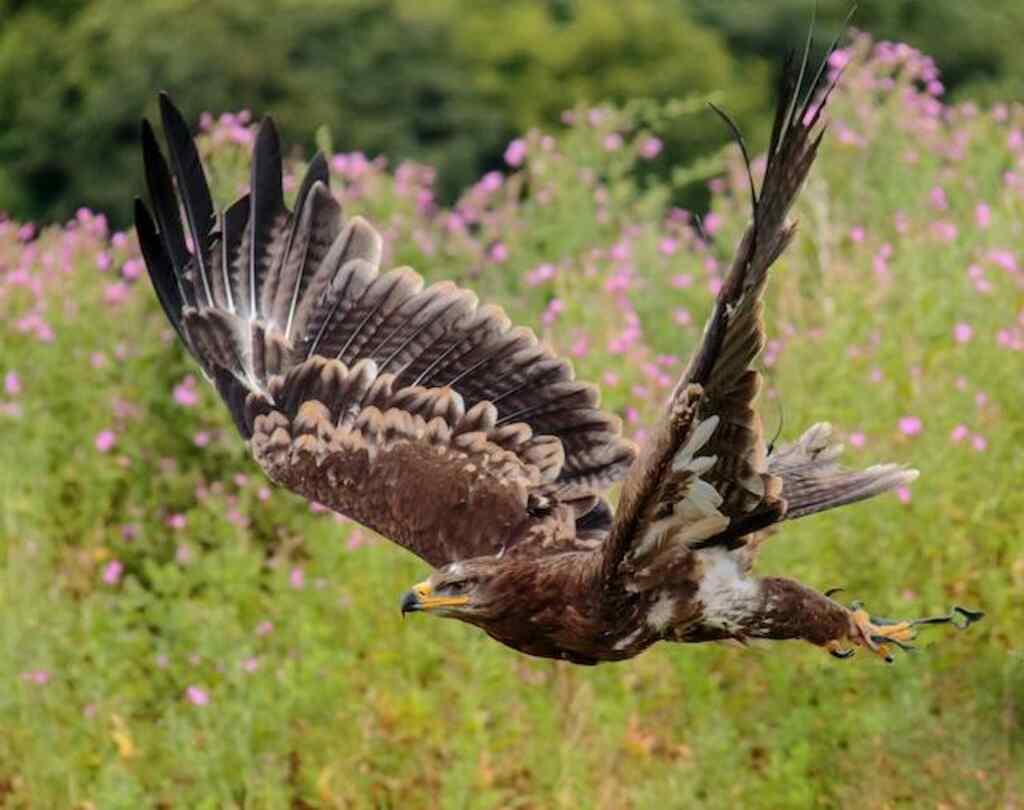
Dove Vulnerability to Eagles
One striking example of how eagles can exploit the vulnerability of doves is their ability to swiftly and skillfully swoop down from the sky, akin to a stealthy hunter pouncing on its unsuspecting prey.
This predatory behavior, combined with the dove population’s lack of defensive mechanisms, makes them easy targets for eagles.
The eagle’s hunting techniques, such as aerial pursuit and surprise attacks, further contribute to their success in capturing doves.
As we delve into the dynamics of eagle and dove coexistence, we will explore the strategies employed by both species.
Eagle and Dove Coexistence
The coexistence between eagles and doves is influenced by shared habitats and territories, ecological balance, and predator-prey relationships.
Both species often inhabit the same areas, leading to competition for resources and space.
The ecological balance between eagles and doves is crucial for maintaining a healthy predator-prey relationship, as eagles play a vital role in controlling dove populations.
Human interventions and conservation efforts are necessary to protect and preserve the natural habitats of both species, ensuring their coexistence in the long term.
Eagle and dove species often coexist in shared habitats and territories. This coexistence, however, can result in habitat competition and species displacement.
To understand this phenomenon, it is important to consider the following:
- Resource availability: Both species rely on similar resources such as food and nesting sites, leading to competition.
- Adaptation strategies: Eagles and doves have developed different strategies to utilize shared resources effectively.
- Ecological niches: Each species occupies a specific niche within the ecosystem, minimizing direct competition.
Understanding these dynamics contributes to our understanding of ecological balance and predator-prey relationships.
Ecological balance and predator-prey relationships
Examining the delicate equilibrium of predator-prey relationships and the broader concept of ecological balance reveals the intricate interconnectedness of species within an ecosystem.
Ecological balance refers to the stability and harmony maintained by interactions between organisms and their environment.
Predator-prey dynamics play a crucial role in maintaining this balance as they regulate population sizes and prevent any one species from dominating.
Understanding these dynamics is essential for effective human interventions and conservation efforts in preserving biodiversity and ecosystem health.
Human interventions and conservation efforts
Conservation efforts are multifaceted and encompass a range of strategies aimed at preserving biodiversity and maintaining ecological balance.
In the context of human-wildlife conflict, eagle conservation plays a crucial role in mitigating conflicts between eagles and humans.
Efforts include promoting coexistence, implementing deterrent measures, and creating protected areas for eagle populations.
These strategies not only safeguard eagle populations but also foster harmony between humans and wildlife.
However, misconceptions and myths surrounding eagle behavior can hinder effective conservation measures.
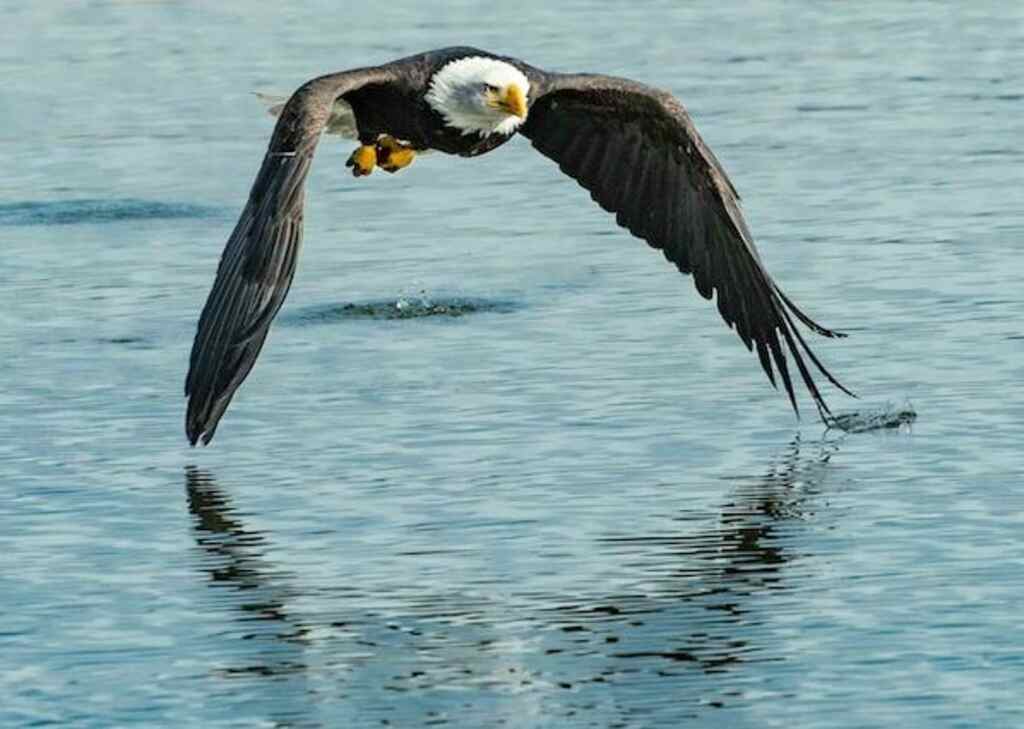
Misconceptions and Myths
Contrary to popular belief, the feeding habits of eagles do not include preying on doves. Despite misconceptions and cultural beliefs, eagles primarily feed on fish, small mammals, and carrion.
While they are opportunistic predators, their diet does not typically consist of doves.
It is important to dispel such myths and misconceptions in order to gain a better understanding of eagle behavior and their ecological role.
Moving forward, it is crucial to explore other factors affecting eagle diet.
Other Factors Affecting Eagle Diet
In considering the various factors influencing the dietary preferences of eagles, it becomes apparent that the availability of suitable prey species and the ecosystem’s overall health play a significant role.
Factors affecting eagle hunting patterns include changes in prey abundance, distribution, and behavior.
Understanding these factors is crucial for implementing effective conservation and protection efforts.
Conservation and Protection Efforts
Efforts to safeguard the well-being of eagles and preserve their natural habitats have been implemented through various initiatives and policies.
These conservation and protection efforts aim to support eagle population growth and mitigate the impact of pollution on their survival.
Conservation organizations work to monitor and protect eagle habitats, enforce environmental regulations, and promote sustainable practices.
By addressing the factors that threaten eagles, these efforts contribute to the freedom and preservation of these majestic birds.
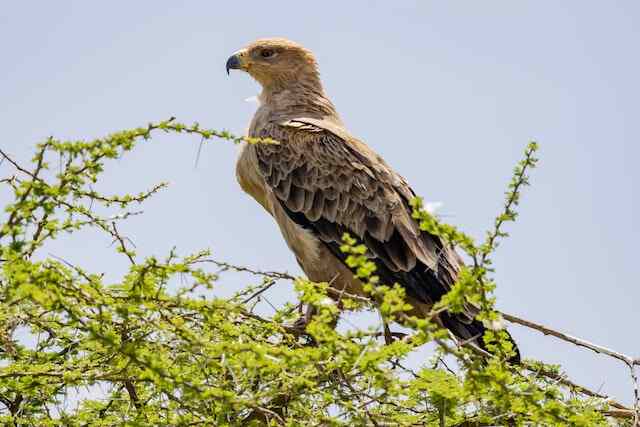
Frequently Asked Questions
How do eagles hunt for their prey?
Eagles employ various hunting techniques to capture their preferred prey. They use their exceptional eyesight, soaring high in the sky, and diving at incredible speeds to surprise and seize their target. This hunting prowess is awe-inspiring, with some eagles reaching speeds up to 100 miles per hour.
Do eagles eat any other animals besides doves?
Eagles have a diverse diet, which includes various animals besides doves. They employ various hunting techniques, such as aerial attacks and ambushes, to catch their prey. The eagle diet and hunting techniques are fascinating subjects for further study.
Are doves capable of defending themselves against eagles?
Doves possess several survival strategies to defend themselves against eagles. These include flying in groups, utilizing their agility and speed, and seeking refuge in trees or dense vegetation. On the other hand, eagles employ various hunting techniques to capture their prey.
How do eagles and doves coexist in the same habitat?
Eagle-dove interactions and habitat sharing pose challenges. Coexistence is achieved through adaptation, competition for resources, and territorial behavior. Understanding these dynamics is crucial for managing these species in shared habitats to ensure freedom for both.
What are some misconceptions or myths about eagles and their diet?
Common misconceptions about eagle diet include the belief that they primarily eat doves. However, eagles are apex predators and have a diverse diet consisting of various prey, such as fish, small mammals, and other birds.
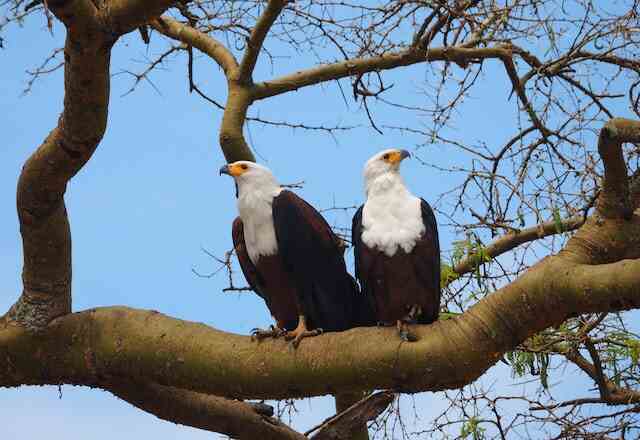
Conclusion
In conclusion, the diet of eagles is diverse and includes various types of prey. Their feeding behaviors are complex, and they interact with doves in different ways.
While doves are vulnerable to eagles, they have also developed strategies for coexistence. It is important to dispel misconceptions and myths surrounding the relationship between eagles and doves.
Additionally, other factors such as habitat and conservation efforts play a role in the eagle’s diet.
Protecting these majestic birds and fostering their coexistence with doves is crucial, like the delicate balance of a tightrope walker.

